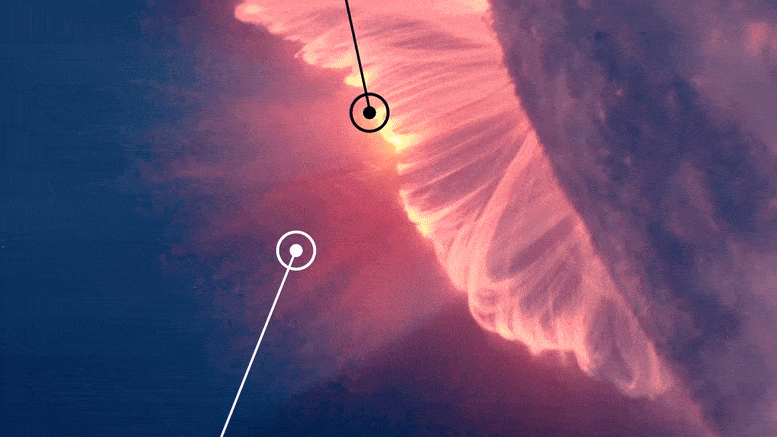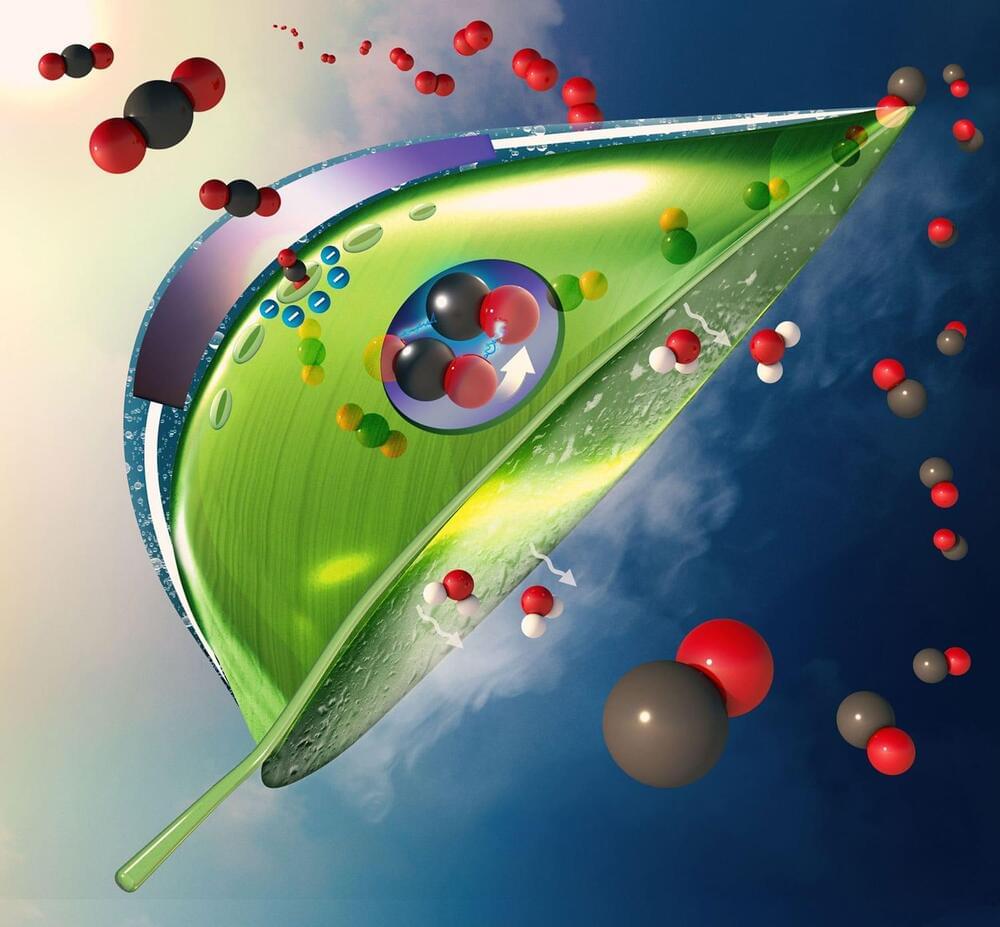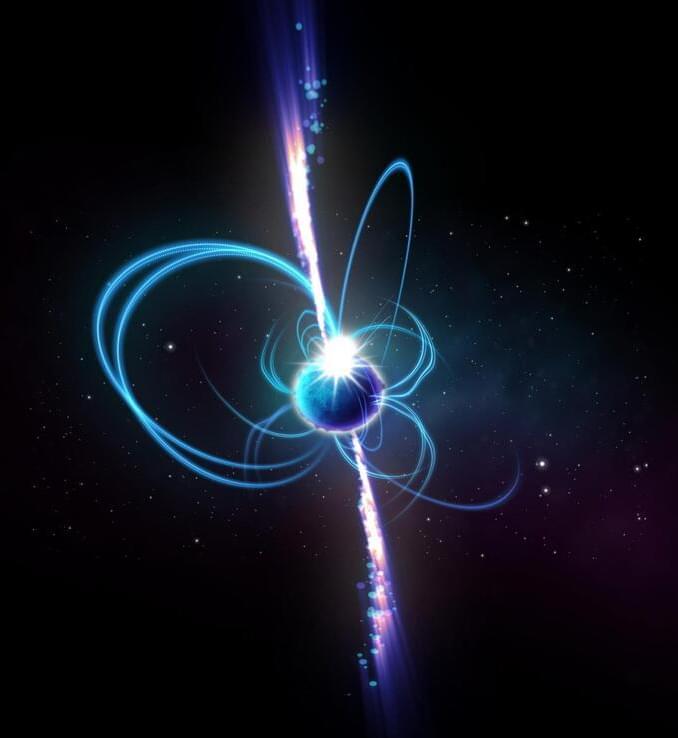The movements are driven by a chemical reaction that consumes molecular energy for this purpose.
Category: energy – Page 174
It plays a significant role in our lives.
From enabling us to walk around and not bump into things to developing highly advanced directed energy weapons, the electromagnetic spectrum is vitally important to many aspects of our modern lives. But, life as we know it would also not be possible if electromagnetic radiation, notably visible light, did not exist.
For most of human history we have only known (but not fully understood) a very small portion of the spectrum — namely visible light and “heat” in the form of infrared light. But, since the scientific enlightenment our knowledge of the spectrum, and applications using it, have literally revolutionized the way we live and perceive the world and the cosmos around us.
Electrolysis is a key component of the cost of green hydrogen, and a Korean team says it’s made a huge breakthrough with an anion exchange membrane that’s not only much cheaper than current proton exchange tech, but offers some 20 percent better performance.
Electrolysis is the process of splitting water into hydrogen and oxygen, and when powered by renewable energy, it’s shaping up to be a key step in the production of green hydrogen. Green hydrogen is set to play a substantial role in the race to zero emissions, offering a high energy density that makes it an attractive option in several hard-to-decarbonize activities where batteries just don’t make sense.
Typically, electrolyzers use proton exchange membranes (PEMs), in which an anode and a cathode in an electrolyte material are separated by a membrane designed to allow positively-charged hydrogen ions to pass through as they’re attracted by the cathode. Here they combine with electrons to form hydrogen gas, which is collected, and oxygen is released at the anode.
Imagine if we could use strong electromagnetic fields to manipulate the local properties of spacetime—this could have important ramifications in terms of science and engineering.
Electromagnetism has always been a subtle phenomenon. In the 19th century, scholars thought that electromagnetic waves must propagate in some sort of elusive medium, which was called aether. Later, the aether hypothesis was abandoned, and to this day, the classical theory of electromagnetism does not provide us with a clear answer to the question in which medium electric and magnetic fields propagate in vacuum. On the other hand, the theory of gravitation is rather well understood. General relativity explains that energy and mass tell the spacetime how to curve and spacetime tells masses how to move. Many eminent mathematical physicists have tried to understand electromagnetism directly as a consequence of general relativity. The brilliant mathematician Hermann Weyl had especially interesting theories in this regard. The Serbian inventor Nikola Tesla thought that electromagnetism contains essentially everything in our universe.
Quantum computers could cause unprecedented disruption in both good and bad ways, from cracking the encryption that secures our data to solving some of chemistry’s most intractable puzzles. New research has given us more clarity about when that might happen.
Modern encryption schemes rely on fiendishly difficult math problems that would take even the largest supercomputers centuries to crack. But the unique capabilities of a quantum computer mean that at sufficient size and power these problems become simple, rendering today’s encryption useless.
That’s a big problem for cybersecurity, and it also poses a major challenge for cryptocurrencies, which use cryptographic keys to secure transactions. If someone could crack the underlying encryption scheme used by Bitcoin, for instance, they would be able to falsify these keys and alter transactions to steal coins or carry out other fraudulent activity.
In January 1999, scientists observed mysterious motions within a solar flare.
Unlike typical flares that showed bright energy erupting outwards from the Sun, this solar flare also displayed a downward flow of motion, as if material was falling back towards the Sun. Described as “downward-moving dark voids,” astronomers wondered what exactly they were seeing.
A team of engineers at the University of Illinois Chicago has built a cost-effective artificial leaf that can capture carbon dioxide at 100 times better than current technologies.
This novel artificial leaf works in the real world, unlike other carbon capture systems that could only work with carbon dioxide from pressurized tanks. It captures carbon dioxide from more dilutes sources, like air and flue gas produced by coal-fired power plants, and releases it for use as fuel and other materials.
“Our artificial leaf system can be deployed outside the lab, where it has the potential to play a significant role in reducing greenhouse gases in the atmosphere thanks to its high rate of carbon capture, relatively low cost, and moderate energy, even when compared to the best lab-based systems,” said Meenesh Singh, assistant professor of chemical engineering in the UIC College of Engineering and corresponding author on the paper.
Energy company Royal Dutch Shell has started operations at the power-to-hydrogen electrolyzer in Zhangjiakou, China, a joint venture between Shell (China) and Zhangjiakou City Transport Construction Investment Holding Group, the Anglo-Dutch company wrote on Friday. The electrolyzer will reportedly provide about half of the total green hydrogen supply for fuel cell vehicles at the Zhangjiakou competition zone during this year’s Winter Olympic Games, set to begin on February 4. Shell looks set to make further investments in China’s hydrogen sector. “We see opportunities across the hydrogen supply chain in China, including its production, storage and shipping. We want to be the trusted partner for our customers from different sectors as we help them decarbonise in China,” commented Wael Sawan, director of Shell’s Integrated Gas, Renewable and Energy Solutions unit. The companies, which took 13 months to complete the project, have plans to scale the power-to-hydrogen electrolyzer up to 60 MW in the next two years. Utilizing onshore wind power, the project will initially supply green hydrogen to fuel a fleet of more than 600 fuel cell vehicles at the Zhangjiakou competition zone during the Winter Olympic Games. After that, the hydrogen will be used for public and commercial transport in the Beijing-Tianjin-Hebei region.
Green Hydrogen Systems, a provider of pressurized alkaline electrolyzers used in on-site hydrogen production based on renewable electricity, has signed a supply agreement with Edinburgh-based Logan Energy to deliver electrolysis equipment for a project in England. The order includes the supply of two electrolyzers with a combined capacity of 0.9 MW for the production of green hydrogen from renewable energy. “Manufactured by Green Hydrogen Systems and operated by Logan Energy, the electrolysers will be deployed in a 40 ft container as a complete green hydrogen plant as part of plans to develop a regional hydrogen economy in Dorset, England,” Green Hydrogen Systems wrote on Tuesday. When fully operational during Q4 of 2022, the ordered electrolyzers will reportedly have the capacity to provide approximately 389 kg green hydrogen per day.
Danish renewable energy provider, Eurowind Energy, has chosen ampere.cloud as a partner to monitor its PV portfolio after an intensive process of technical due diligence. A conversation:
A team mapping radio waves in the Universe has discovered something unusual that releases a giant burst of energy three times an hour, and it’s unlike anything astronomers have seen before. The team who discovered it think it could be a neutron star or a white dwarf—collapsed cores of stars—wi…
Electric bicycle sales have been on a skyward trajectory since early in the pandemic, and new numbers show they are selling more units than electric cars and plug-in hybrids combined. Those figures recently released by the Light Electric Vehicle Association trade group help bolster the case for personal electric vehicles as alternatives to larger cars […].









